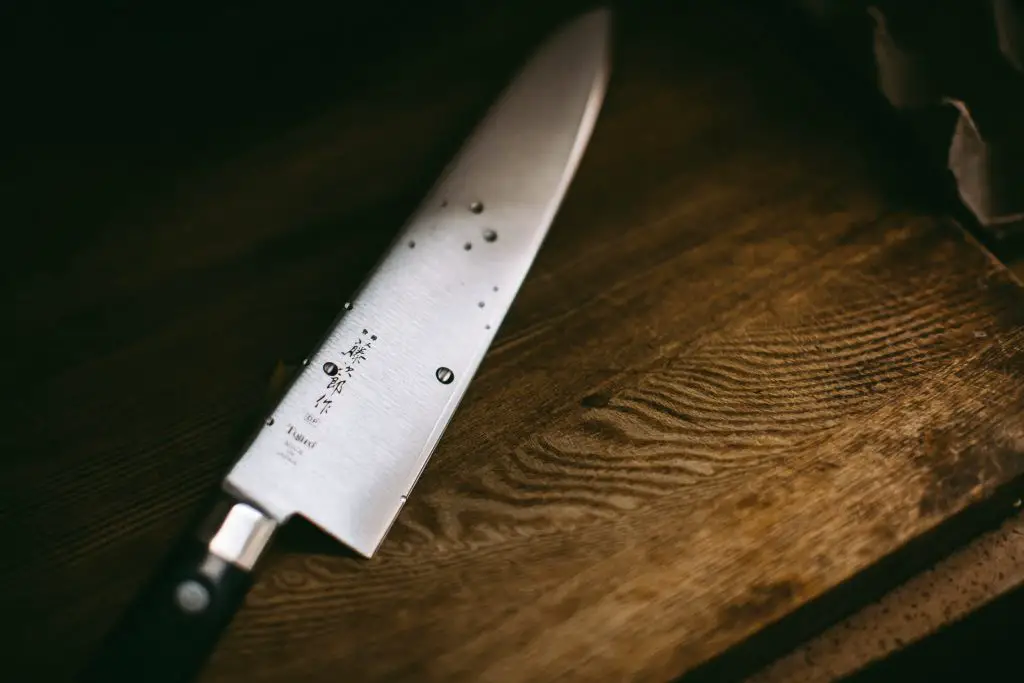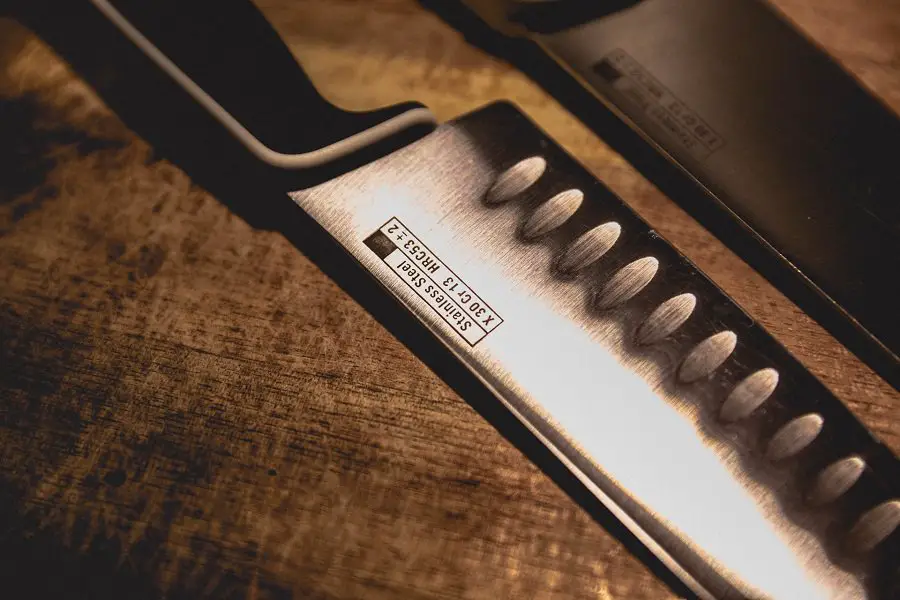As an Amazon Associate we earn from qualifying purchases.
Knives are a very handy kitchen tool that need to be sharpened regularly. While a lot of tools are available for the same, a whetstone is undoubtedly the most preferred. In this article, I tell you how to use a whetstone.
Quick Navigation
How to Use a Whetstone
The word whetstone is a combination of two words, ‘whet’ and ‘stone.’ The word ‘whet’ means ‘to sharpen a blade.’ Hence, the name is quite self-explanatory.
Step #1: Moistening the Whetstone
Some people prefer to keep the whetstone dry, while some like to use oil to moisten it. Adding some moisture reduces heat generated due to friction.
Before using the whetstone, keep it submerged in water for at least 5-10 minutes. Some people like to keep it soaked in water 24 hours before using it to saturate the whetstone.
After saturating it, place the whetstone on a mat or towel. This prevents the whetstone from losing moisture. Using a towel or a holder also provides stability to the whetstone while it is in use.
While using the whetstone to sharpen the knife, apply flowing water. This washes away the small particles that break off during the grinding process.

Step #2: Grinding on the Coarse Side
The whetstone has two sides, a coarse one and a fine one. The coarse one easily removes metal from the blade, while the fine one adds finesse. To sharpen a knife using the coarse side of the whetstone:
- Hold the blade at an angle of 15-20 degrees and make sure to maintain the same angle throughout the process. Use the coarse side of the whetstone for grinding.
- To get the desired angle for the whetstone, hold the blade at an angle of 90 degrees, then tilt the blade to half the distance between it and the stone. Half the angle again to reach approximately 20 degrees.
- Some special kinds of knives, like Japanese knives, need to be held at a different angle. Be sure to know what angle your blade requires.
- Move the blade to and fro across the length of the whetstone, applying light but even pressure. The number of to and fro movements needed depends on the initial sharpness of the blade.
- To remove any burrs or imperfections, give the blade a few quick swipes on the corner of the stone. Check if the blade is as sharp as desired.
Flip the blade and follow the same process for the other side of the knife. You must apply the same pressure at the same angle, or you’ll end up creating a big burr on the knife.
Step #3: Grind on the Fine Side
The finer side of the whetstone is used to refine the blade, producing a sharper and long-lasting edge.
Place the knife on the whetstone at an angle of 15-17 degrees with the blade facing away from you. In the case of Western knives, the angle must be around 18-22 degrees, even for the finer side of the whetstone. Maintaining the proper angle is of prime importance.
Start at the heel of the blade; push the knife forward and then backward. Gradually move to the tip of the blade and move it forward and backward. Then flip the knife to sharpen the other side of the blade.
Remember to soak the whetstone in water before using the fine side. Drawing some grids on it will make grinding easier.
Step #4: Check if the Knife Is Sharp Enough
When you sharpen your knife, a rough edge will appear on the opposite side of the knife. This is usually not visible to the naked eye.
Although it is not visible, it can be easily felt. Carefully run your finger from the center of the knife to its sides after sharpening it a little with the whetstone.
When you start sharpening the other side, the rough edge will slowly shift from one side to the other. The rough edge will get smaller and smaller as you move to the fine side.
When you can no longer feel the rough edge, it means your blade has been properly sharpened. Make sure to do the process carefully as you might hurt yourself.

Step #5: Storing the Whetstone
A big part of learning how to properly use a whetstone is learning how to store it.
After using the whetstone, it is important to store the whetstone properly so that it does not lose its properties.
Remove any particles of metal on the whetstone by wiping it with a cloth. Then wash it thoroughly and again let it dry for some time.
After this, place your whetstone carefully in a box and put it away. Make sure to keep it in a place that is out of bounds for children as it is heavy and can be dangerous.
Here’s a comprehensive video guide to learn how to sharpen a knife with a whetstone.
Frequently Asked Questions
Can You Use a Whetstone Dry?
Whetstones can be used dry. However, when learning how to use a whetstone for household purposes, the whetstone should be wet. This reduces friction and makes the sharpening process much easier and smooth.
Should I Use Water or Oil as a Lubricant?
Though some people use oil as a lubricant, water is preferable. This is because once oil is used, water can no longer be used as a lubricant, and you need to use kerosene from thereon.
Can You Use Olive Oil on a Whetstone?
It is very important to know that vegetable oil of any type should not be used on a whetstone. Only used honing oils approved for whetstones.
Do You Push or Pull While Sharpening a Knife?
If the whetstone is small, stroke the blade in a straight direction. Always cut into the stone and never pull or drag your edge backward.
Conclusion
Using dull knives increases the chances of injury. But now that you know how to sharpen with a whetstone, you’ll be able to slice through food without risking hurting yourself.
